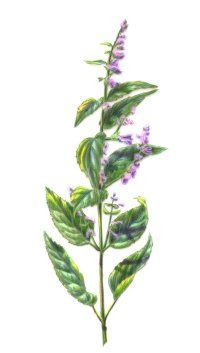The shape of the shepherd's purse fruit, resembling the purses that Europeans once hung from their belts, gave this herb its name. Shepherd's purse can be found almost anywhere in the world, donning its white flowers throughout the year.
Its availability is just one of shepherd's purse's helpful qualities. It can help regulate blood flow and is often used as a herbal remedy to treat regular bleeding disorders, such as heavy periods.
Advertisement
Uses for Shepherd's Purse
Shepherd's purse is used to stop heavy bleeding and hemorrhaging, particularly from the uterus. When taken internally, shepherd's purse can reduce heavy menstrual periods, and it has been used to treat postpartum hemorrhage.
Still, it is considered most effective for the treatment of chronic uterine bleeding disorders, including uterine bleeding due to the presence of a fibroid tumor. Shepherd's purse has also been used internally to treat cases of blood in the urine and bleeding from the gastrointestinal tract, such as with bleeding ulcers.
An astringent agent, shepherd's purse constricts blood vessels, thereby reducing blood flow. Shepherd's purse is also thought to cause the uterine muscle to contract, which also helps reduce bleeding. There is still much to learn about this herb.
When used topically, shepherd's purse is applied to lacerations and traumatic injuries of the skin to stop bleeding and promote healing. Herbalists also use the herb topically for eczema and rashes of the skin. In the next section, we'll discuss ways to prepare shepherd's purse.
To learn more about treating common medical conditions at home, try the following links:
- For an overview of all of our herbal remedies, go to the main Herbal Remedies page.
- To learn more about treating medical conditions at home, visit our main Home Remedies page.
- One of the best things you can do for your health and well being is to make sure you are getting enough of the vital nutrients your body needs. Visit our Vitamins page to learn more.
This information is solely for informational purposes. IT IS NOT INTENDED TO PROVIDE MEDICAL ADVICE. Neither the Editors of Consumer Guide (R), Publications International, Ltd., the author nor publisher take responsibility for any possible consequences from any treatment, procedure, exercise, dietary modification, action or application of medication which results from reading or following the information contained in this information. The publication of this information does not constitute the practice of medicine, and this information does not replace the advice of your physician or other health care provider. Before undertaking any course of treatment, the reader must seek the advice of their physician or other health care provider.Before engaging in any complementary medical technique, including the use of natural or herbal remedies, you should be aware that many of these techniques have not been evaluated in scientific studies. Use of these remedies in connection with over the counter or prescription medications can cause severe adverse reactions. Often, only limited information is available about their safety and effectiveness. Each state and each discipline has its own rules about whether practitioners are required to be professionally licensed. If you plan to visit a practitioner, it is recommended that you choose one who is licensed by a recognized national organization and who abides by the organization's standards. It is always best to speak with your primary health care provider before starting any new therapeutic technique.
Advertisement
